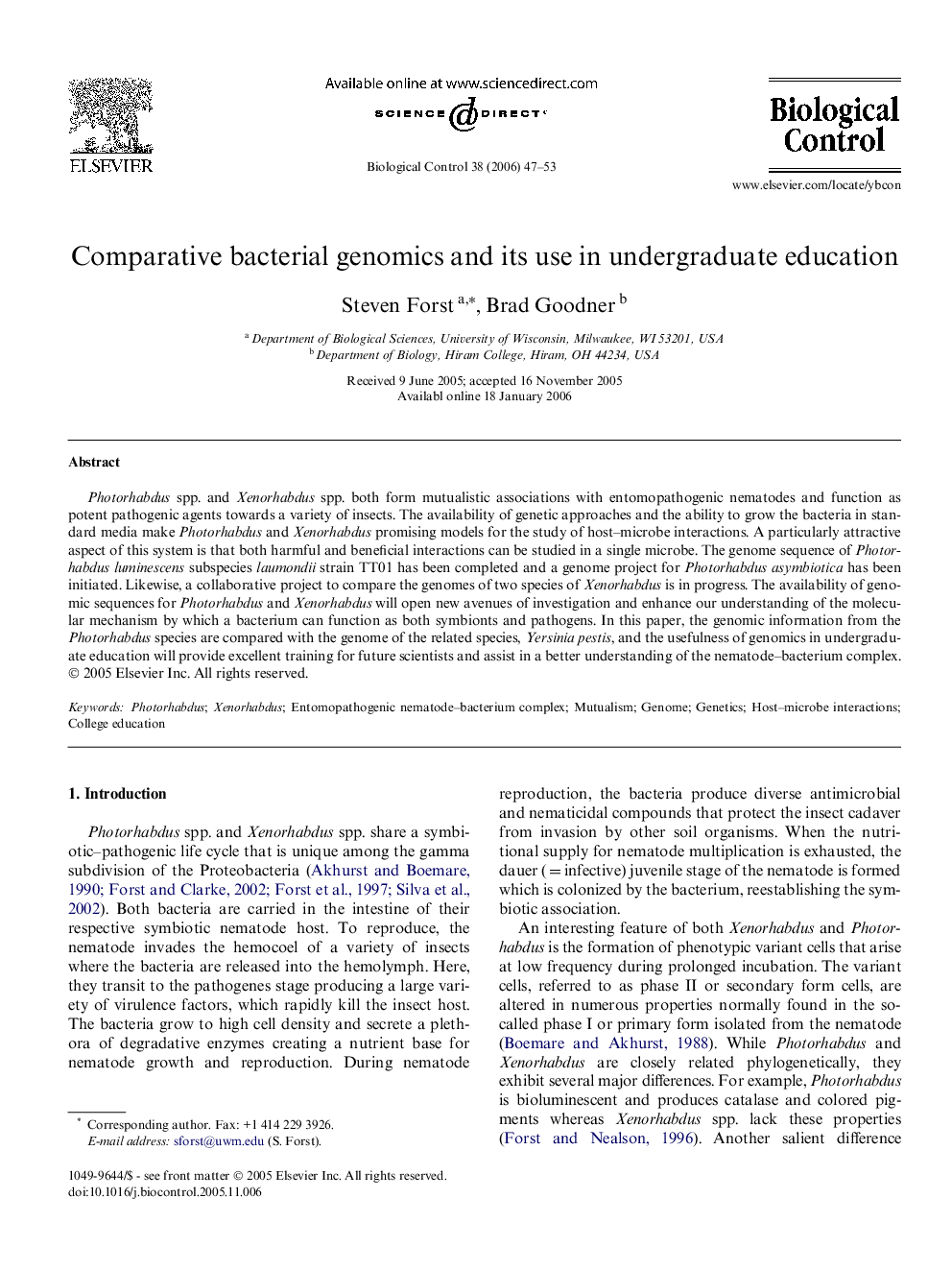| Article ID | Journal | Published Year | Pages | File Type |
|---|---|---|---|---|
| 4505360 | Biological Control | 2006 | 7 Pages |
Abstract
Photorhabdus spp. and Xenorhabdus spp. both form mutualistic associations with entomopathogenic nematodes and function as potent pathogenic agents towards a variety of insects. The availability of genetic approaches and the ability to grow the bacteria in standard media make Photorhabdus and Xenorhabdus promising models for the study of host-microbe interactions. A particularly attractive aspect of this system is that both harmful and beneficial interactions can be studied in a single microbe. The genome sequence of Photorhabdus luminescens subspecies laumondii strain TT01 has been completed and a genome project for Photorhabdus asymbiotica has been initiated. Likewise, a collaborative project to compare the genomes of two species of Xenorhabdus is in progress. The availability of genomic sequences for Photorhabdus and Xenorhabdus will open new avenues of investigation and enhance our understanding of the molecular mechanism by which a bacterium can function as both symbionts and pathogens. In this paper, the genomic information from the Photorhabdus species are compared with the genome of the related species, Yersinia pestis, and the usefulness of genomics in undergraduate education will provide excellent training for future scientists and assist in a better understanding of the nematode-bacterium complex.
Related Topics
Life Sciences
Agricultural and Biological Sciences
Agronomy and Crop Science
Authors
Steven Forst, Brad Goodner,
